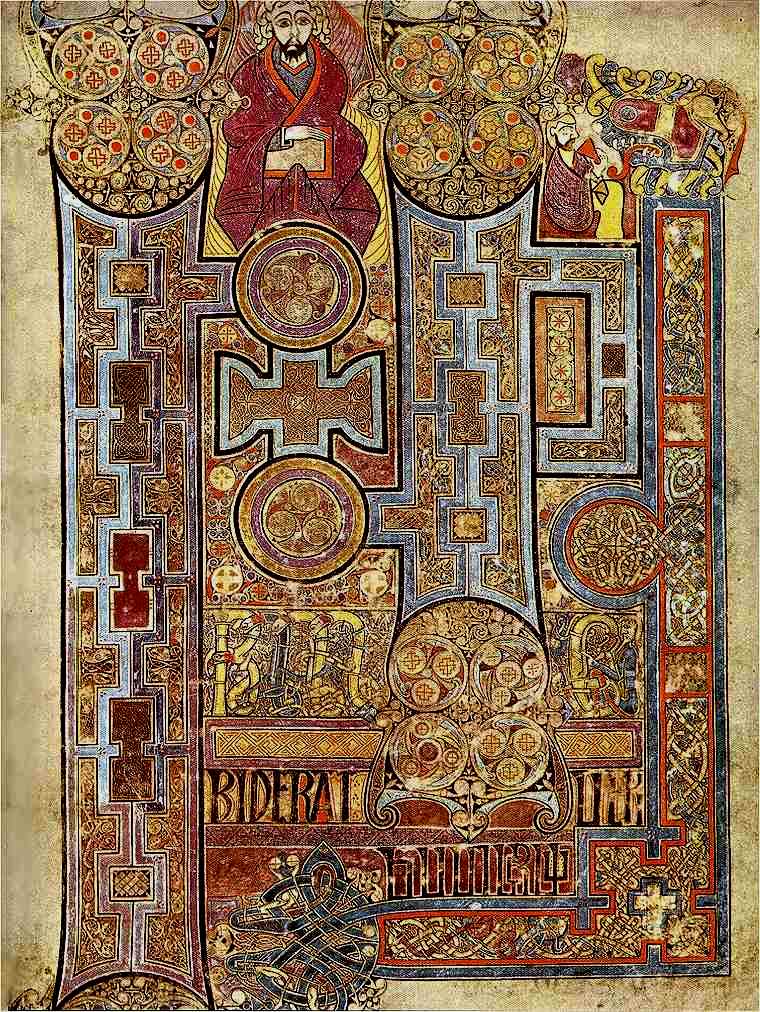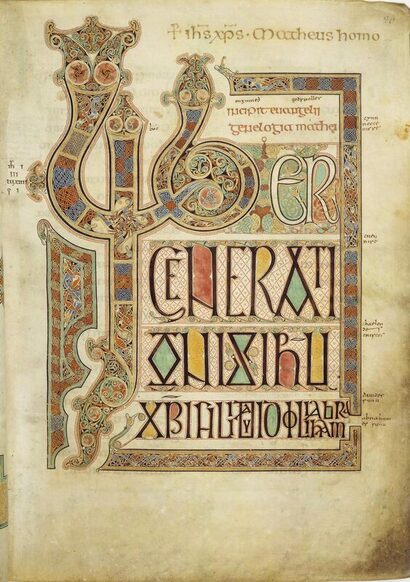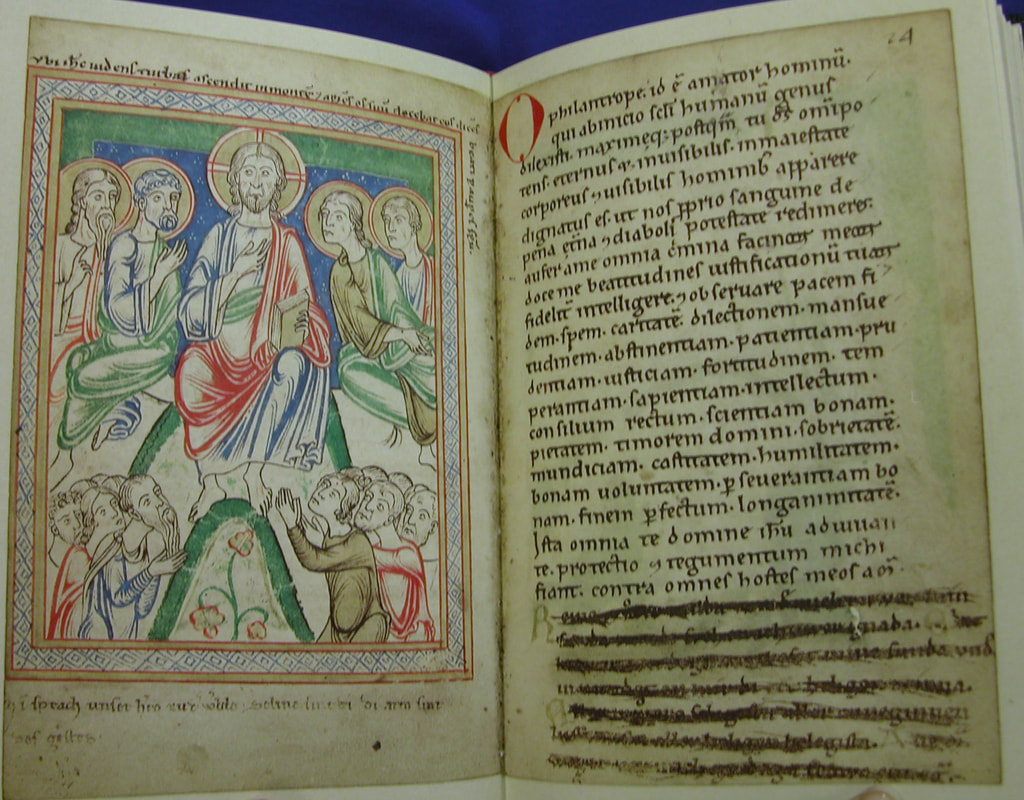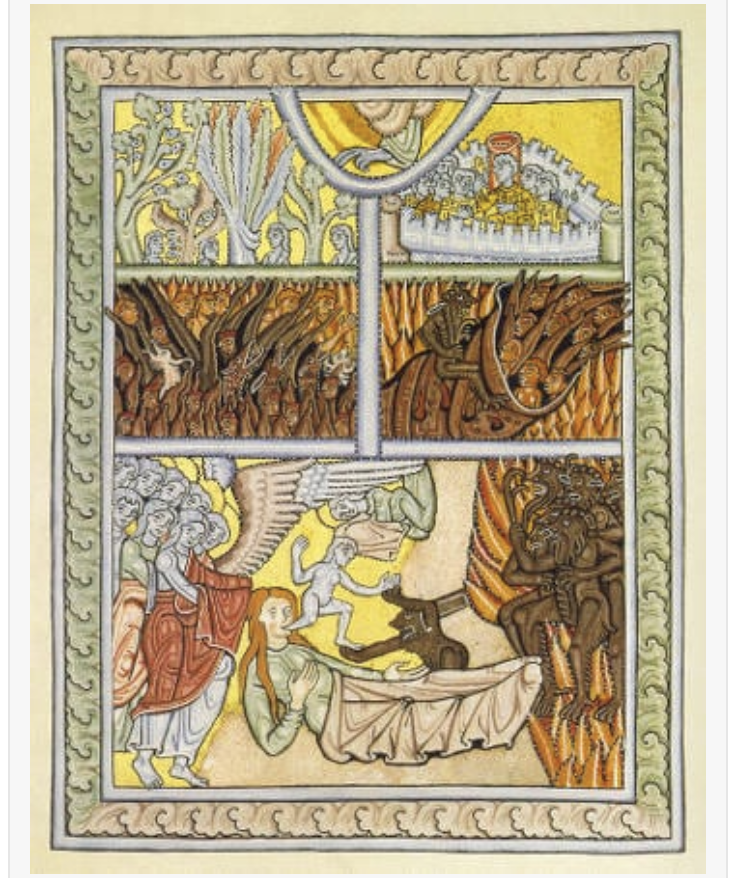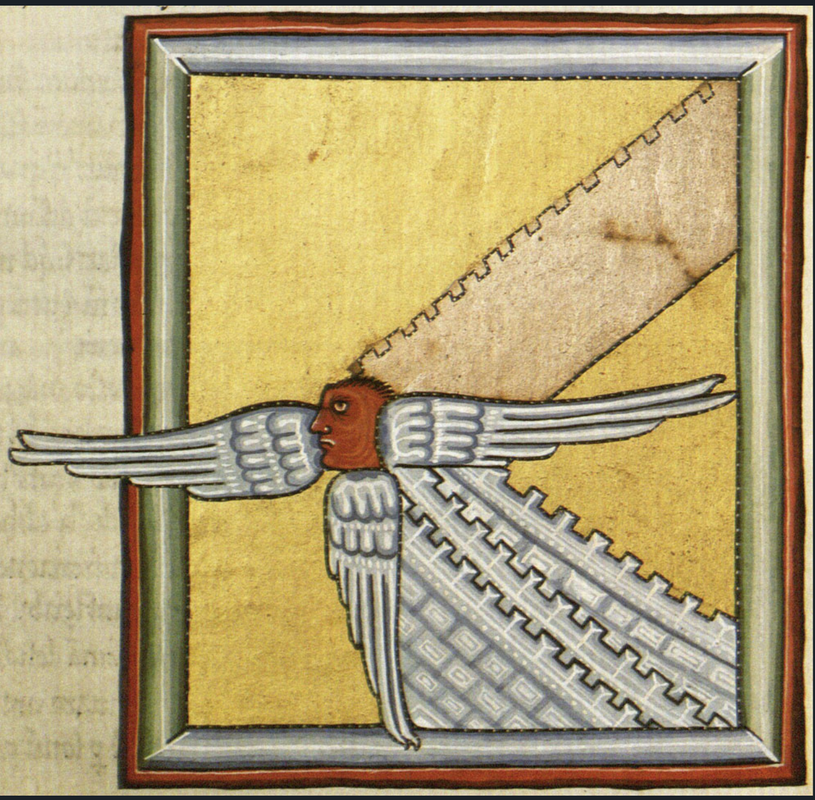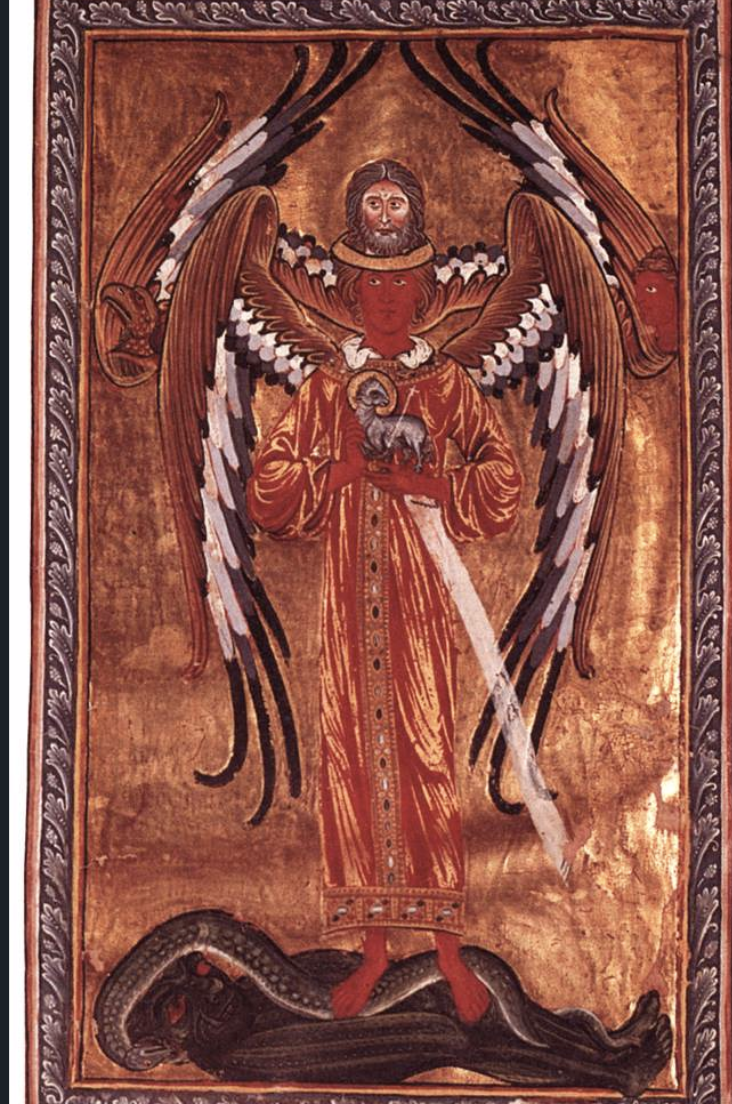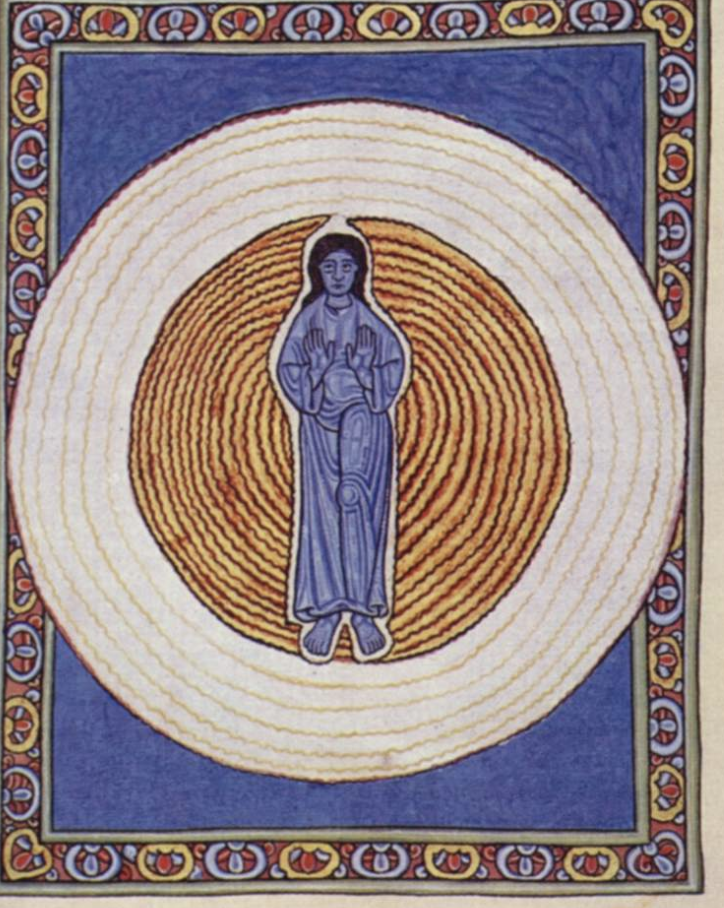Week Four: Visio Divina
Watch the video of this session here
Watch the video of this session here
One of the many contemplative practices designed to awaken the imagination is Visio Divina, literally "Sacred Seeing". An essential aspect of Medieval life was the monastic balance between word and image. The Medieval psalters (prayerbooks) are usually equally devoted to text and illumination. The monks or nuns in the scriptorum would painstakingly produce symbols and images made from magnificent stones (like lapis lazuli) and gold in borders that would highlight the meaning of the words. Some of the most exquisite artistic treasures from the Middle Ages are manuscripts like The Book of Kells and the Lindisfarne Gospels created in Benedictine monasteries in the the Celtic Isles. Click here to see images of the Lindisfarne Gospels (C. 700 CE) which are held in the British Library.
We know from modern neuropsychology that images activate the right hemisphere of the brain while reading text activates the left hemisphere. Engaging in the act of creating visual responses to the words brings the brain into equilibrium and wholeness, which corresponds to a balanced sense of emotional equilibrium.
HIldegard's own visionary experience parallels the process that the great Swiss psychologist Carl Jung described as "active imagination". Both Jung and Hildegard experienced visions and vivid dreams in their midlife awakening. Each one wrote out a simple sketch of their visions, then copied it out in exquisite calligraphy accompanied by exquisite illuminations. From vision to writing to image- and then to a process of working with the image to yield further understanding.
There are three ways to explore the spiritual tool:
1) Copy passages of a text (scripture, quotes or poetry) and illuminate it yourself- find a way to highlight the words that most call to your heart and then create an image that holds the meaning of the text
1) Copy passages of a text (scripture, quotes or poetry) and illuminate it yourself- find a way to highlight the words that most call to your heart and then create an image that holds the meaning of the text
For further reading and study:
See Scivias here
Illuminations of Hildegard of Bingen, Matthew Fox
Book of Life’s Merits
Hildegard: Prophet of the Cosmic Christ by Renate Craine
One of the most striking features of much of HIldegard's artistic works is the importance of nature and the presence of mandalas. I imagine that she would have deeply appreciated the Earth Art of two contemporary artists: scupltor Andy Goldsworthy, whose work in creating earth art is featured in the award winning documentary films Rivers and Tides and Leaning Into the Wind and author Day Schildkret whose website here and book Morning Altars are both filled with stunning mandalas made of natural seasonal items.
See Scivias here
Illuminations of Hildegard of Bingen, Matthew Fox
Book of Life’s Merits
Hildegard: Prophet of the Cosmic Christ by Renate Craine
One of the most striking features of much of HIldegard's artistic works is the importance of nature and the presence of mandalas. I imagine that she would have deeply appreciated the Earth Art of two contemporary artists: scupltor Andy Goldsworthy, whose work in creating earth art is featured in the award winning documentary films Rivers and Tides and Leaning Into the Wind and author Day Schildkret whose website here and book Morning Altars are both filled with stunning mandalas made of natural seasonal items.
Contact Kayleen Asbo: [email protected]
